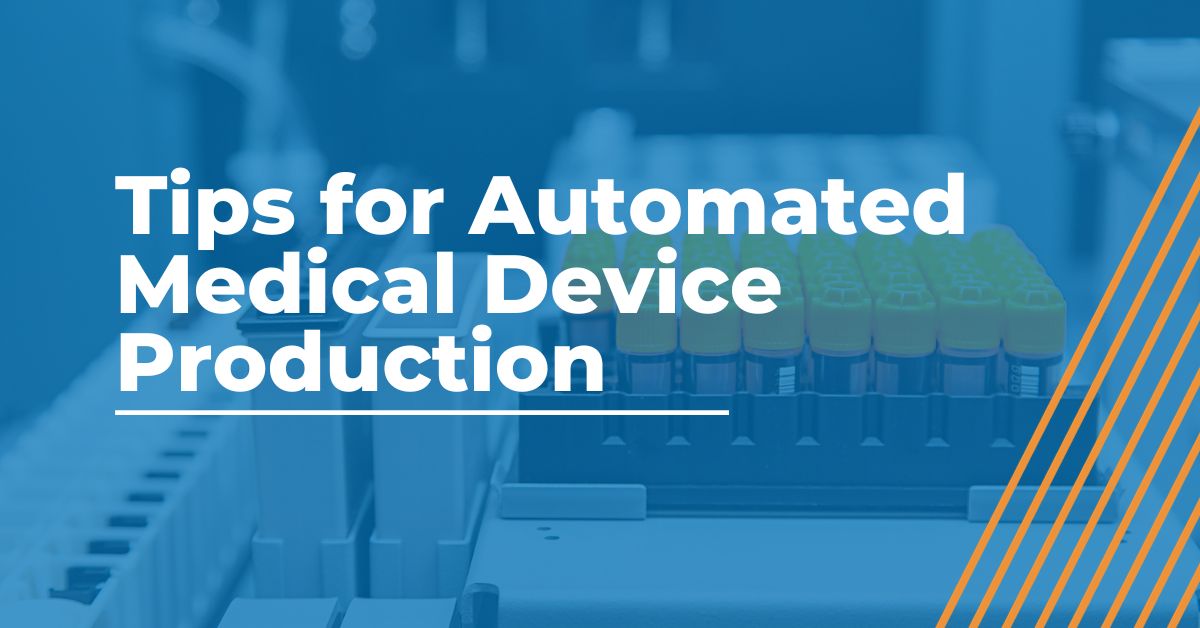
Eight Tips for Automated Medical Device Product Assembly
Using automation in the assembly of medical devices offers many advantages for a company. The implementation of automated systems into medical device manufacturing allows companies to enhance the quality of their products. Moreover, they can also offer a safer alternative to manual labor, and contribute to an increased production efficiency. Here is a list of eight helpful tips to help you optimize your automated medical device product assembly process.
1) Assess Vendors Thoroughly
With many options for potential suppliers, it is important to carefully evaluate and compare each option. Consider a vendor’s strengths, weaknesses and proposed solutions to ensure they align with your objective.
2) Evaluate Preferences for Automation
There are many choices to be made when implementing automated medical device product assembly. It is important to determine automation preferences to tailor to your specific production needs. Consider factors such as feed rates, machine speeds and precision to decide what will be most effective for your production process.
3) Create and Monitor the Project Plan
A project plan needs to include milestones and production schedules and input from both the suppliers and customers. After the plan is created, it needs to be continuously reviewed and adjusted throughout the entire production process to ensure the project is on track.
4) Conduct a Process Failure Modes and Effective Analysis (PFMEA)
Perform a complete and meticulous PFMEA to identify potential high-risk or high-maintenance processes. This can help you adjust these risk areas to minimize interference with the production process which can overall lessen the cost of production.
5) Prototype Complex Processes
During the product design phase, it is important to pinpoint processes that might be considered complex or high-risk. Developing prototypes to test these processes would be very beneficial. Prototyping will allow for a thorough evaluation of the process, to identify any adjustments that need to be made to produce a viable outcome.
6) Consider Part Design and Dimensional Quality
In order to optimize the quality and reliability of automated medical device product assembly, it is important that the parts are a good fit for each other. This means ensuring that each part is designed in a way that the machine can easily guide them together and that they have a stable dimensional quality. Faults in the dimensional quality or part design can jam the machine, causing a setback in the production process.
7) Develop a User Requirement Specification (URS)
Developing a comprehensive URS is essential to ensure the clarity of project requirements and specifications. The URS serves as a guide for suppliers to ensure accurate project proposals and objectives.
8) Active Ownership
Active ownership is the last step to consider in automated medical device product assembly. It is important to acknowledge that the ultimate owner of the entire process is the customer. It is ideal to get the customer’s team on board with the development process as early as possible to ease the transition to ownership. The earlier the customer begins working with the supplier, the more comfortable they will be when it comes time to take responsibility for the machine.
Want to Automate Your Medical Device Product Assembly?
There are so many important factors when automating your medical device production. We briefly explained eight of them in this list, but there are always more things to consider and questions to ask when it comes to implementing medical device product assembly. And for that, AMS is here to help. If you have more questions or want to speak to a specialist about automation, you can call us or book an appointment.
Our Automated Medical Manufacturing White Paper Will Help You Envision New Ways of Operating
Reading this white paper will help you:
